Can a Commercial Care System Really Take on Disparities Rooted in Economics?
Changing Care is Just a Start
We know the U.S. that healthcare works better for some than others. Black women are nearly two and half times more likely to die in childbirth than their white counterparts; they’re also 70% more likely to perish from cervical cancer. As shown on the chart here, though more while women face breast cancer, more black women die of it.
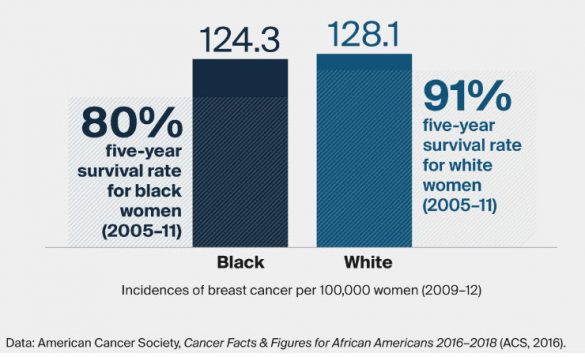
The difference isn’t within the women, its within the health systems we control, and our larger culture which influences health before care begins. In this post I’ll suggest these two domains, within care and before care, must both be addressed to gain equitable health outcomes. These are ideas I personally struggle with, and which leaders I talk with say call them to engage beyond our individual organizations. This is to share some facts and ideas that have guided me, and that may be of interest to you.
Addressing Disparities Within Healthcare
Professionals in healthcare are taking disparities seriously, and they’re looking for the changes the can make within care organizations to close these gaps. Responses range from adapting care to better suit diverse patients, addressing implicit bias, and in general making medicine better representative of and informed by those they serve.
In a similar fashion, the research, education, med-tech and pharmaceutical industries which support care are working to remedy practices which perpetuate disparities as well. For instance, the effect of using young, white, male medical school volunteers has made the resulting treatments less effective on women, people of color, and those who don’t fit other classic med school demographics. Admission to medical school itself has been a filter to who can enter and progress in medicine, and the degree to which caregivers embody the diversity of the communities they serve. These are big issues, works in-progress. We need to do more.
Proponents may frame reducing disparities as anti-racist/sexist/ablest – or affirming the LGBTQ, undocumented, or other “minoritized” groups such as youth or the old. Recognizing and responding to diversity is the kind of healthy, adaptive thinking we’ve seen spreading across care teams for over a decade. But such discrimination also exists outside of the care systems health care professionals control. It has historically been enforced by policy and law, which forms a range of socio-economic disparities which our systems of care operate within.
Disparities Start Long Before Care
By the time someone arrives to care, many health relevant factors have already been established. Personal behaviors, such as smoking, exercise, diet, the experience of stress or trauma all influence health and treatment outcomes. As important as delivering unbiased, culturally informed care is, what happens to people in their homes and community does far more to establish their health.
So we need both, culturally attuned treatment organizations who serve patients where they are. And efforts to change the health relevant context of how people live, so they can arrive for care healthier and more able to engage in care.
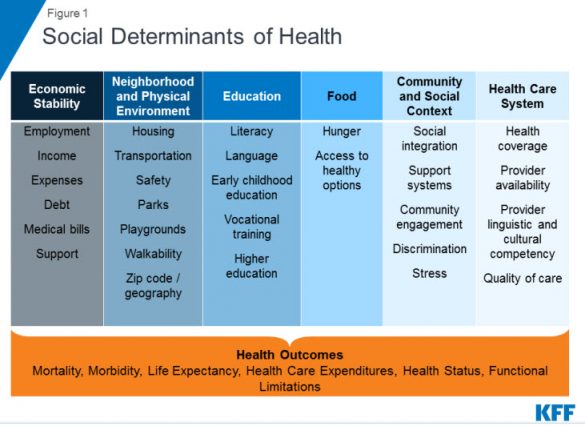
The Social Determinants of Health, as described here by KFF, are deeply ‘socio-economic’. As shown here the factors cascade from access to income and wealth to then extend themselves through various factors known to drive health outcomes.
First, let’s recognize that the health outcomes (in gold) seem remarkably frank: they feature life expectancy and mortality. Its rare to see outcomes that show both sides of a ledger this way: death, physical limitations and cost are as much outcomes as health and generativity.
Second, note that the healthcare system is the very last ‘downstream’ phase in this process. Patients arrive to care with many health-relevant factors already established. As an example, smoking varies counter to educational attainment. Clinicians may help a patient quit smoking, but their success may in fact be opposed by social determinants.
Social Determinants Exist on a System Level Above Changing Care
This example of smoking illustrates the opportunity within care to anticipate a need for a services which follows demographics and identifiable stressors, and the need above that level to also address the factors which encourage high smoking rates in specific groups. Changing things within care is what Dr. Peter Jones, who popularized this kind of analysis in Design for Care, might call a D3 activity. While potentially ambitious, is at least confined within a single organization and how it interacts with the community.
Public Health thinking can also bring an organization to seek community change, a D4 activity, such as to reduce smoking. Strategies could inhibit underage access to tobacco, increase public use barriers, or involve partnering with community advocates on prevention or screening which precedes care. Reducing the smoking rate may create a range of health benefits, but the design and measurements of such programs will be more complex as it spans multi-stakeholder networks and requires collaboration across entities.
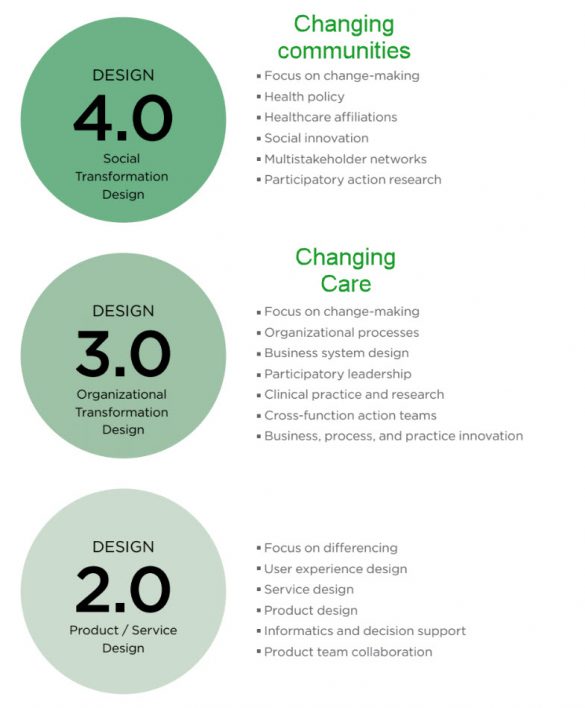
Are the Benefits of Medicine Reserved to the Rich? That’s a disparity.
As I noted last month, mortality is an especially powerful way to focus policy makers. Human deaths, and its forward looking counterpart, life expectancy are top-level outcomes for spotting disparities too.
The Congressional Research Service follows changes in life expectancy across income quartiles to inform anti-poverty programs, such as Social Security. Their latest update in 2021, show the continued splitting the lifespan with the benefits of progress accruing to top earners, with few if any benefits, shown as lifespan, to the lower half of earners. Economic success and health are closer linked than in the past – and a difference in the length of life based on income is a disparity drives less healthy outcomes for racial, gender and other groups which receive lower incomes.
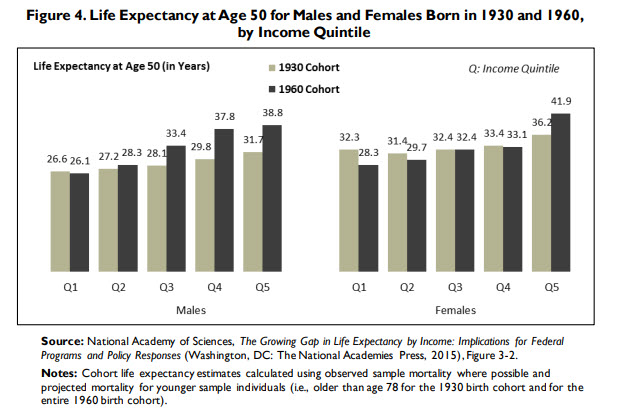
As you can see, thirty years of progress have added around seven years of life to men and women from higher income quartiles, while they are effectively lost on the poor. Can there be a clearer disparity than when the poor in the U.S. suffer disparate mortality?
We know that how someone is fed, housed, taught and embraced by community determines their health, and in this data we see it defining who has a longer or shorter life. Commercial payers and providers, and the consulting firms who serve them seem eager to address disparities within care. But can we expect to take on the economic disparities which drive health disparities by RFP and better focused commercial activity? How capitalist can healthcare be and still be just when high wealth disparity creates the context for care?
Is It Time to Replace the Rat’s Nest of Healthcare in the US?
No matter how bold one must be to sand-up for inclusion and diversity in care – one must be bolder still to hold the systems that create the context for health to those same standards.
The Commonwealth Fund’s latest report is pretty damning of the US health system in terms of expense, and the resulting benefits across patients. Their analysis of ten highly developed health systems rank the US last repeatedly, leading to a top-level finding is that achieving better health outcomes will require policy changes within and beyond health care.
Their focus is at a system level, what Dr. Jones would call D4 design thinking, which is transformative across commmunities. Here are the four big things the report says that other countries are doing to deliver better health and fewer disparities.
- They provide for universal coverage and remove cost barriers so people can get care when they need it and in a manner that works for them.
- They invest in primary care systems to ensure that high-value services are equitably available locally in all communities to all people, reducing the risk of discrimination and unequal treatment.
- They reduce the administrative burdens on patients and clinicians that cost them time and effort and can discourage access to care, especially for marginalized groups.
- They invest in social services that increase equitable access to nutrition, education, child care, community safety, housing, transportation, and worker benefits that lead to a healthier population and fewer avoidable demands on health care.
Progress May Be More Possible Than It Appears
Change in large systems usually appears to be impossible until its a done deal. Before COVID, no one imagined how telemedicine could be practiced across state jurisdictions, or how to get providers on board. It happened when circumstances made the demand for change become irresistible.
In America, people of lower income die regularly at an earlier age than their wealthier counterparts. If we explore and accept this fact, it is worth pausing to consider if that fact is acceptable. If we know the status quo to be unnecessarily complex, expensive and unfair to the vulnerable – what top level systems would we have to change to fix it?
This may be the long game of healthcare policy, to improve our commercial system suspecting that it may also need to be piece-by-piece be replaced. One of my health system clients confided to me, “We’re not the ones who build this rat’s nest of a care system. But we are the rats who know how to make it work.”
As we make care work day-to-day, part of our mind and time must be left free to engage in system change that span organizations. Google’s example of allowing developers innovation time may be resonate to healthcare leaders. The time we think about making change outside of our organizations, may be what frees us from the context which today drives unequal health outcomes.
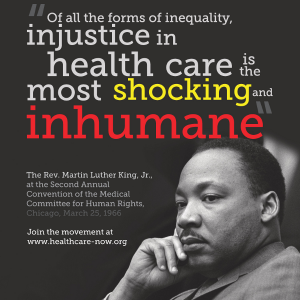
This post mentions or draws on some resources I’d recommend beyond any ideas offered here. Get in touch, I’d value your thoughts on them.
- The Congressional Research Service’s now updated view on the growing gap in life expectancy by income.
- The National Library of Medicine’s Pathway’s to Health Equity publication: The Root Causes on Inequity.
- Kaiser Family Foundation’s Beyond Health Care: The Role of Social Determinants in Promoting Health and Health Equity.
- The Commonwealth Fund’s Mirror, Mirror 2021: Health Care in the U.S. Compared to Other High-Income Countries.
- Dr. Peter Jones, Design for Care – which is at once a smart book on design in business systems and its specialized appliccation in healthcare.

 The future of digital experiences will be built by strategists who grasp the full array of emerging business, social, and technical models. Specialties in user experience, branding, application design, and data science are laying the foundation for richer user experiences and business models breakthrough products and revenue based marketing.
The future of digital experiences will be built by strategists who grasp the full array of emerging business, social, and technical models. Specialties in user experience, branding, application design, and data science are laying the foundation for richer user experiences and business models breakthrough products and revenue based marketing.
74 Responses to "Can a Commercial Care System Really Take on Disparities Rooted in Economics?"
November 28, 2022
I heard something very similar from my local commercial tree care company https://www.greatervictoriatreeservice.ca/ thanks for clarifying this.
December 14, 2022
I don’t know why the government has not seen how crucial health care is globally even before the pandemic.
http://www.clearviewwc.com
December 21, 2022
Best ERP Software suits all kinds of businesses and all requirements. It is easy to learn, implement, and use without having to call for specialists in Mumbai ,India.
December 26, 2022
I agree, thanks. scaffolding in sunderland
January 2, 2023
Great read. Thanks for sharing this information. I learned a lot.
January 12, 2023
It’s so sad reading about how racism still takes place during these times. It is so unfair.
luxurypoolconcepts.com
January 21, 2023
I like reading more about this matter.
https://sonnysdiamonds.com/
January 25, 2023
I love that you also included some important data necessary to back this article up. –Matt
February 1, 2023
it is increasingly clear that we should be focusing on solving. nswtreeremovals.com.au
February 16, 2023
Really liking these new videos discussing economics.
https://staffordtreesurgeons.co.uk/
March 6, 2023
This is such a comprehensively written article. contact us
March 10, 2023
For instance, the effect of using young, white, male medical school volunteers has made the resulting treatments less effective on women, people of color, and those who don’t fit other classic med school demographics.
March 20, 2023
What a comprehensive article! Good job on this. https://sohofittampa.com/
March 20, 2023
Equity should be considered especially since this is something big.
March 28, 2023
Thank you so much to writing this wonderful blog. It’s really worthwhile.
https://treeservicebrokenarrow.net/
March 30, 2023
I sure wish that they could find a cure for cancer. eastbournetreesurgeons.co.uk
April 7, 2023
Digital business needs a cadre of leaders who can connect C-level enterprise thinking with the ways these new interaction models can help organizations to matter more to their most important stakeholders.
April 12, 2023
The disparities in healthcare outcomes for different groups and suggests that addressing these disparities requires action both within the healthcare system and beyond it. Within the healthcare system, efforts are being made to adapt care to better suit diverse patients, address implicit bias, and make medicine better informed by the communities it serves. However, the author notes that disparities in health outcomes are also influenced by factors that are established long before someone arrives for care, such as personal behaviors and the health-relevant context of how people live. Thus, efforts to reduce disparities must also address the broader societal factors that contribute to them. The author emphasizes the importance of recognizing and responding to diversity as a healthy and adaptive approach to care.
April 20, 2023
Thanks a lot for being able to share this article in here.
https://www.reliantpools.com/
April 20, 2023
Commercial care systems can play a role in reducing economic disparities in healthcare, but a more comprehensive approach is needed that addresses the root causes of these disparities. This requires investment in public health infrastructure, addressing social determinants of health, and addressing implicit bias in healthcare.
May 11, 2023
Addressing disparities in healthcare is critical to achieving equitable health outcomes. Efforts are being made by healthcare professionals, research and education organizations, med-tech and pharmaceutical industries to adapt care to better suit diverse patients, address implicit bias, and increase diversity among caregivers. However, disparities also exist outside of the care systems controlled by healthcare professionals, and are historically enforced by policy and law, leading to socio-economic disparities that affect health outcomes.
Many health relevant factors that affect health outcomes are established long before someone arrives for care, such as personal behaviors, the experience of stress or trauma, and socio-economic factors. Therefore, it is crucial to address both the cultural competence of treatment organizations and efforts to change the health relevant context of how people live, to improve health outcomes and enable patients to arrive for care healthier and more able to engage in care.
May 14, 2023
This is such a helpful and informative article! Thank you very much for this. https://sohofittampa.com/
June 4, 2023
These information are really important! Thanks for sharing this. contact us
June 8, 2023
“Amazing write up! Thanks for this submit.
“
June 12, 2023
This is just amazing! Thank you very much for sharing this to us. roofers dayton oh
June 13, 2023
The issue of healthcare disparities in the United States goes beyond the care provided within healthcare organizations. There are significant disparities in health outcomes based on race, with black women being more likely to die in childbirth and from cervical and breast cancer compared to their white counterparts. These disparities are not due to inherent differences among women but are influenced by the health systems and larger cultural factors that shape health before care even begins. https://cincinnati-seo.com/
June 13, 2023
Although we are not in healthcare, it is fascinating and unfortunately quite eye-opening to read information like this.
June 15, 2023
These infographics are really important! Thanks for including them in your article. http://www.westcoastgenerators.com
June 20, 2023
So much money is spent on symptom management not on prevention
https://stalbansfencingsolutions.co.uk/
June 26, 2023
This is really informative! Thanks for this one. St Pete SEO
June 27, 2023
Explore the potential of a commercial care system in addressing disparities rooted in economics. Discover its capabilities and limitations in tackling this complex issue.
Metal security fence
July 19, 2023
I couldn’t even imagine having to think about all of this before I sought healthcare.
July 19, 2023
It really makes you feel like your taxes are being put to good use.
https://treeserviceshighwycombe.co.uk/
August 1, 2023
You are an awesome writer. I am grateful for this content. Please call us if you are looking for mount pleasant painter near me.
August 3, 2023
A Commercial Care System faces significant challenges in addressing disparities rooted in economics. While it can provide services, the underlying issues require comprehensive socio-economic reforms. Tackling inequality demands targeted policies, affordable access to essential services, and fair wages. A collective effort from governments, businesses, and communities is essential for sustainable change http://www.easydemolitioncompanystlouis.com
August 3, 2023
Always nice to read this kind of post. For anyone looking for exterior painting eau claire, don’t hesitate to call us.
August 4, 2023
I always appreciate new information like this post. You are doing awesome and keep up the great work. Check us at our insurance consultancy company.
August 4, 2023
The post highlights the importance of addressing disparities in healthcare, both within care organizations and in the larger cultural and societal context. It emphasizes that the difference in health outcomes is not solely due to individual factors but is influenced by the health systems and cultural norms.
August 9, 2023
Always nice to see this. This is something worth reading. Come and find out more about our executive deferred compensation plan
August 10, 2023
This idea is great and I totally agree with this post. Greetings from our house painter.
August 11, 2023
I love your writing voice because it’s engaging and approachable. Wow! Thank you from our life insurance in colorado springs co
August 16, 2023
Kudos from https://medicaresalesagent.com/
September 7, 2023
These are ideas I personally struggle with, and leaders like drywall specialist i talk with say call them to engage beyond our individual organizations.
September 17, 2023
Some time I have breast pain but doctor say this is not cancer.
https://www.ausupersolutions.com.au/
September 22, 2023
Is cervical cancer screening the same as a pap test?
October 2, 2023
The healthcare was brilliant and definitely worth it.
October 11, 2023
What I do have a problem with, is people not even being able to afford living. http://www.bizleadz.com.au/
October 16, 2023
Thanks for this! https://www.2cconstruction.com/
October 20, 2023
commercial roofing
October 20, 2023
Love Your RV But Don’t Live With It — Southern Utah RV Storage
October 20, 2023
Anchorage Radion Mitigation
October 24, 2023
print outs anywhere for educators who work in public health to use these visuals?
https://www.asfinancialplanning.com.au/
October 27, 2023
Change in large systems may seem impossible until circumstances make it necessary. Addressing disparities in healthcare is a long-term effort, and it may involve gradually transforming the current healthcare system. It’s essential to engage in both day-to-day care and system-level change that spans organizations to work toward more equitable health outcomes.
November 1, 2023
Thank you for sharing this post! Resin driveways are a type of driveway surface made by combining aggregates like gravel or crushed stone with a clear resin binder. DrivewaysinEdinburgh
November 5, 2023
Sitenizin tasar?m? da içerikleriniz de harika, özellikle içerikleri ad?m ad?m görsellerle desteklemeniz çok ba?ar?l? eme?inize sa?l?k.
November 13, 2023
Thanks for this! Visit us!
November 15, 2023
have all their basic needs met before they can stand on their own.
https://www.jlinvestmentfund.com/
November 21, 2023
Cheers from https://medicaresalesagent.com/
August 1, 2024
Join us at our Christian Church where we celebrate and uphold the value of equality for all. You are warmly invited to be part of our inclusive community!
September 19, 2024
I found this site very informative. Great work! pool cover replacement
October 9, 2024
It’s great to see an informative post here. rescreening
October 10, 2024
Thanks for the great stuff you shared. pool screen repair
October 24, 2024
Kudos to our https://exclusiveleadstore.com/
October 27, 2024
Looking for a reliable Ecommerce development company? Our team specializes in creating tailored e-commerce solutions that drive results. We design, develop, and maintain robust e-commerce platforms with user-friendly interfaces, secure payment options, and efficient backend management. Our expertise spans various industries, allowing us to craft unique, scalable solutions for businesses of all sizes.
Whether you need a custom-built site or modifications to an existing platform, we use the latest technologies, including Magento, Shopify, WooCommerce, and custom frameworks. From mobile responsiveness to SEO integration, our e-commerce solutions ensure a seamless shopping experience that enhances customer engagement and maximizes sales. Trust us to bring your e-commerce vision to life.
October 30, 2024
Thanks for taking the time to share this article here. lanai screen
November 10, 2024
I can’t believe I found such content like this on the internet! Been looking for this one. Thank you so much and it was really helpful and informative. Storefront door repair Chicago
November 10, 2024
What a great piece! I was astounded by the array of high-end amenities available in modern limos. Can I find a way to compare stretch limos and party buses? Airport Service Limo
November 19, 2024
It’s a great site to visit. concrete slab
February 11, 2025
Great site to visit. Keep on sharing, please. brick retaining walls
February 13, 2025
Dialogare con Moscarossa Liguria Alternativo meravigliose è un’possibilità unica che arricchisce la mia energia.
February 20, 2025
Awesome! Thanks for sharing this info here. Elite Roofing Sacramento Roof Replacement
March 11, 2025
This is to share some facts about what is purple drywall
and ideas that have guided me, and that may be of interest to you.
March 28, 2025
Thank you for the great information you shared. fence builder
June 5, 2025
They invest in primary care systems to ensure that high-value services are equitably available locally in all communities to all people like our concrete contractor, reducing the risk of discrimination and unequal treatment.